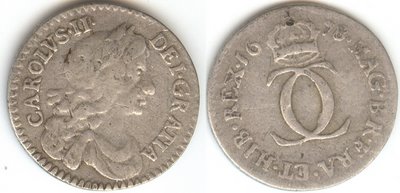
I thought people might be interested in this story if they have not all
ready heard about it on the news. I hope you enjoy it and find it as
interesting as I do. I can't wait to see some images of the new coin
types. The obove picture shows the hoard find but not individual coins the picture is from the British Musuem via AP
The most important Viking treasures to be discovered in Britain for 150 years have been unearthed by a father and son while metal detecting in North Yorkshire.
David and Andrew Whelan uncovered the hoard, which dates back to the 10th century, in Harrogate. The British Museum said yesterday that the treasures were of global significance and could shed new light on the period.
Andrew Whelan, 35, said it had initially felt like an unlucky day when they drove out to the countryside with their metal detectors one Saturday morning in January.
He and his father, 65, had been turned away from two farms and had had a squabble before reluctantly visiting a field as a "last resort" because they had only ever discovered buttons there.
The pair then unearthed a bundle which included 617 silver coins, a gold arm-ring and a gilt silver vessel so rare it is only the second of its kind ever to be found in Britain, and is among six or seven in Europe.
Mr Whelan Jnr, who has been metal detecting for six years, said it quickly became apparent they had stumbled upon an extraordinary find.
"My father got a strong signal and a cup tumbled out after a couple of scoops of earth. There was a coin sat on top of this bundle. We knew then it was something big and we were shaking with excitement as we lifted it out," he said.
After transporting the hoard to their home, they left it on their kitchen counter while they went to report it to their local finds liaison officer in Leeds. It was transferred to the British Museum where conservators carefully examined each item over months.
It is thought that the treasure was buried for safekeeping by a wealthy Viking leader during the unrest that followed the conquest of the Viking kingdom of Northumbria in AD 927 by the Anglo-Saxon king Athelstan (924-39).
One of the coins, which bears the Latin inscription, Rex Tiotius Britanniae, dating to 927, is the earliest indication of Britain being under one ruler, at a time when the country was split between Viking and Anglo-Saxon control. The medieval objects were found to have come from Afghanistan, Russia, Scandinavia and continental Europe.
The gilt vessel, made in France in the first half of the ninth century, has roundels inscribed with seven animals around it, and was believed to have been intended for use in church services. It was probably looted from a monastery by Vikings or given to them in tribute.
Most of the smaller objects were hidden inside the vessel. The coins included several new and rare types, suggesting that there were more mints in the country than previously thought.
The coroner, Geoff Fell, declared the hoard as a treasure, at a court hearing in Harrogate. "Treasure cases are always interesting, but this is one of the most exciting cases that I have ever had to rule on. I'm delighted that such an important Viking hoard has been discovered in North Yorkshire. We are extremely proud of our Viking heritage in this area," he said.
Margaret Hodge, the Culture minister, added: "Finds such as this are invaluable in teaching us about our history. I commend David and Andrew Whelan for their prompt and responsible reporting of this hugely significant find, which will enrich our understanding of the Vikings."
The hoard will be valued and then the British Museum and York Museum Trust plan to appeal to the Heritage Lottery Fund for its acquisition so they can exhibit it.
The Vikings in Britain
* In the year 793, Viking pirate raiders sailed across the North Sea to attack a Christian monastery at Lindisfarne in north-east England and pillage the surrounding area. Viking raids spread across Britain soon afterwards.
* In 865, a huge army of Danish Vikings invaded England. The fighting went on for several years.
* Vikings conquered all of northern, central and eastern England, and seized much of the land for their own farms. They called the area The Danelaw.
* In the ninth century, Norwegian Vikings sailed to northern and western Scotland and seized land. They also settled on the Isle of Man and Wales.

![]()


















